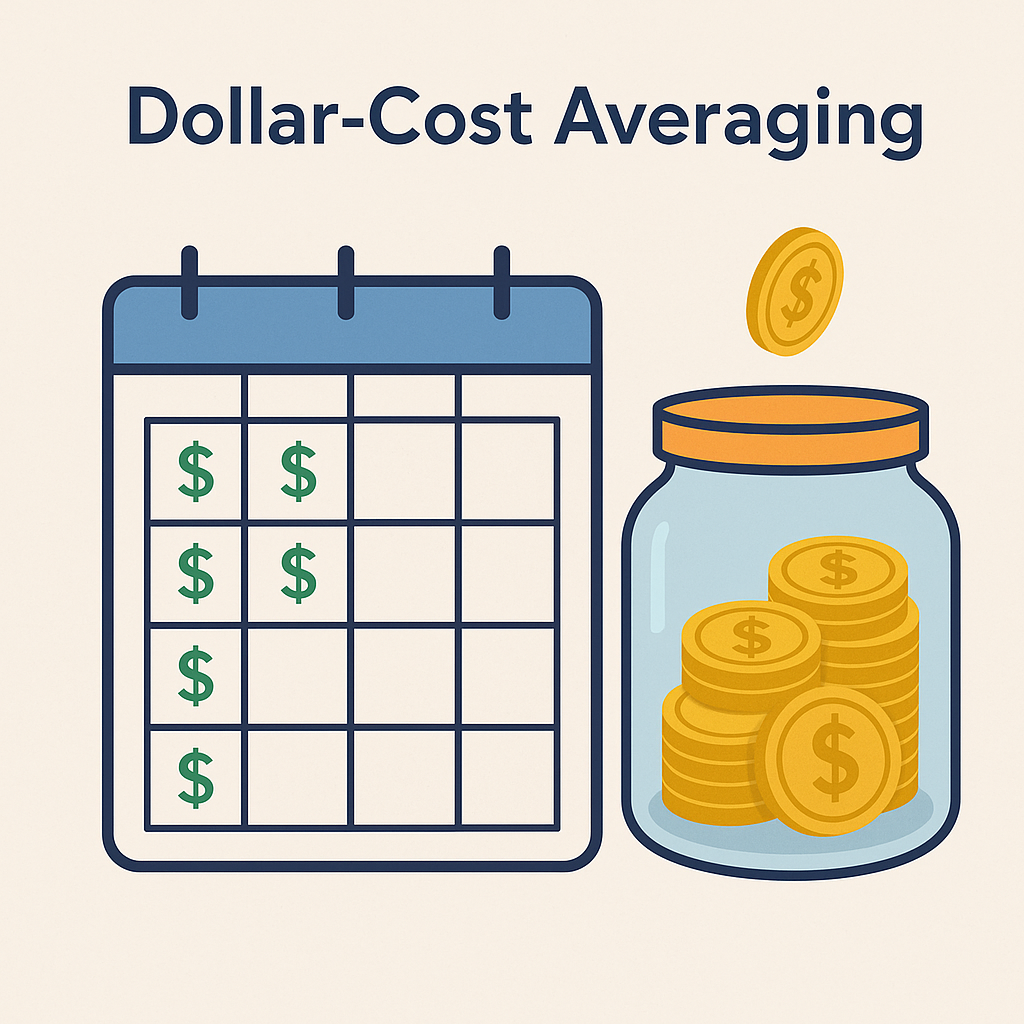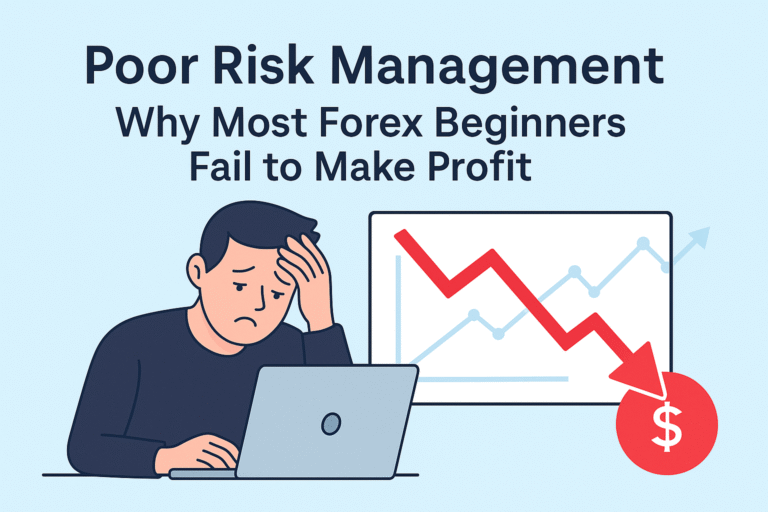Is Long-Term Investing Better Than Day Trading for Beginners? (2025 Comparison Guide)
Is Long-Term Investing Better Than Day Trading for Beginners
Is long-term investing better than day trading for beginners? Many new investors struggle to choose between these two popular strategies. In this quick guide, we break down the pros, cons, and which option is best for beginners in 2025.
What Is Long-Term Investing?
What is long-term investing? It’s a simple strategy where you buy assets like stocks, ETFs, or crypto and hold them for several years—sometimes even decades. The goal is to let your money grow slowly and steadily over time.
Unlike day trading, long-term investing doesn’t require daily monitoring. You focus on the big picture, not short-term price swings.
🧠 Why Do People Choose Long-Term Investing?
Long-term investing works because of a powerful concept called compound growth—where your earnings are reinvested to earn even more. Over time, this can lead to significant wealth, even from small, regular investments.
This strategy is especially great for beginners because it:
- Reduces emotional decision-making
- Requires less time and effort
- Lowers the risk of frequent trading losses
✅ Benefits of Long-Term Investing
- Lower Risk: Avoid short-term market noise and volatility
- Fewer Fees: You trade less often, saving money on commissions
- Tax Advantages: Long-term gains are taxed at lower rates
- Less Stress: You’re not glued to the screen or charts all day
❌ Are There Any Drawbacks?
Yes, there are a few things to consider:
- You need patience—results come slowly
- Your money is tied up for the long term
- Market crashes can still affect your portfolio (but recovery is likely over time)

🔍 Who Is Long-Term Investing Best For?
This strategy is ideal for:
- Beginners with limited market experience
- People with long-term goals (like retirement or education)
- Anyone who wants a hands-off investing style
📌 Final Thoughts
So, what is long-term investing? It’s one of the safest and smartest ways to build wealth over time—especially for beginners. If you’re looking for steady growth, fewer risks, and a strategy that doesn’t require watching the market every day, long-term investing is the right choice.
Benefits of Long-Term Investing
The benefits of long-term investing go far beyond just growing your money. It’s one of the simplest and safest ways for beginners to build wealth without needing to watch the markets daily. When you hold your investments for years instead of weeks or days, you take advantage of time, growth, and lower costs.
✅ 1. Compound Growth
This is one of the biggest benefits of long-term investing. Compound growth means your money earns interest, and then that interest earns more interest over time. The longer you stay invested, the more powerful this effect becomes.
✅ 2. Lower Transaction Costs
Long-term investors don’t buy and sell assets frequently. This reduces:
- Brokerage fees
- Trading commissions
- Short-term taxes
Fewer trades = more money in your pocket.
✅ 3. Tax Advantages
In many countries, holding investments for over a year gives you lower tax rates on profits. These are called long-term capital gains, and they can save you a lot compared to short-term trading taxes.
✅ 4. Less Emotional Decision-Making
When you invest long-term, you’re not reacting to daily price movements. You avoid panic selling during market drops and avoid buying into hype. This helps you make better financial decisions based on logic, not fear or greed.
✅ 5. Peace of Mind and Time Freedom
Long-term investing doesn’t require you to monitor charts all day. It’s less stressful, and you don’t need to become a market expert to succeed. This makes it perfect for people with jobs, school, or other daily responsibilities.
✅ 6. Strong Historical Returns
Over decades, markets like the S&P 500 have delivered average returns of 8–10% per year. While not guaranteed, history shows that long-term investing tends to reward patient investors.
📷 Image Placement Suggestion
Place an image below this section, right after “Strong Historical Returns.”
Image Idea:
A chart showing how $1,000 invested over 20 years can grow through compound returns.
Suggested Alt Text:
“Visual of compound growth – long-term investing benefits chart”
🧾 Final Thoughts
The benefits of long-term investing make it one of the smartest strategies for beginners. With time, patience, and consistency, you can build real wealth while avoiding the stress and risk of day trading.
Downsides of Long-Term Investing
While long-term investing is a smart and low-risk way to build wealth, it’s not perfect. The downsides of long-term investing are often overlooked, but they’re important to understand—especially for beginners. Knowing the risks helps you plan better and avoid surprises.
❌ 1. Requires Patience and Discipline
One of the biggest downsides of long-term investing is that you won’t see results overnight. It may take years before your portfolio shows significant growth. This can be frustrating for beginners who expect fast returns.
❌ 2. Market Volatility Still Affects You
Even long-term investors aren’t immune to market crashes or recessions. While the market tends to recover over time, short-term losses can still cause anxiety if you’re not mentally prepared to ride them out.
❌ 3. Limited Access to Your Money
Long-term investing means your money is tied up for years. If you suddenly need cash, selling your investments early may lead to losses or unexpected taxes.
❌ 4. Potential Missed Opportunities
While you’re holding one investment, other high-growth opportunities may pass by. Day traders and short-term investors might profit more quickly from market trends that long-term holders ignore.
❌ 5. Overconfidence in “Buy and Hold”
Some investors stick to the “buy and hold” mindset even when market conditions or personal goals change. This can lead to holding bad investments too long without re-evaluating your strategy.
🧾 Final Thoughts
The downsides of long-term investing don’t mean you should avoid it. Instead, they highlight the importance of realistic expectations, regular check-ins, and a diversified portfolio. If you can stay patient and emotionally steady, long-term investing is still one of the best strategies for building wealth—despite its limitations.
What Is Day Trading?
What is day trading? It’s a fast-paced investment strategy where you buy and sell financial assets—like stocks, crypto, or forex—within the same day. The goal is to make quick profits from small price changes during the trading session.
Unlike long-term investing, day traders don’t hold assets overnight. They close all positions by the end of the day to avoid overnight risks.
⚙️ How Does Day Trading Work?
Day trading relies on:
- Real-time market data
- Technical analysis (charts, patterns, indicators)
- Fast decision-making
Day traders use platforms with advanced tools and aim to take advantage of short-term volatility. Even a small price swing can lead to a profit—if timed correctly.
✅ Who Is Day Trading For?
Day trading is suitable for:
- People who can dedicate several hours a day
- Traders with high-risk tolerance
- Those who understand market trends and technical tools
It’s not recommended for beginners unless they’ve studied trading strategies and can afford to lose some capital.
⚠️ Key Characteristics of Day Trading
- High Risk, High Reward: Potential for quick gains—but also fast losses
- Requires Experience: You need knowledge of technical charts and risk management
- Emotionally Demanding: Fast trades can cause stress and lead to poor decisions
- Short-Term Focus: Unlike long-term investing, you’re not building for the future

🧾 Final Thoughts
So, what is day trading? It’s a high-speed trading strategy focused on short-term price movements. While it can be profitable, it also carries high risk and requires deep knowledge, quick reflexes, and emotional control. If you’re a beginner, it’s best to learn slowly or start with long-term investing first.
Benefits of Day Trading
The benefits of day trading appeal to many people who want to take control of their finances and potentially earn fast profits. Unlike long-term investing, day trading focuses on buying and selling assets within the same day—taking advantage of short-term price movements.
While it’s a high-risk strategy, day trading offers several unique advantages for experienced or active traders.
✅ 1. Quick Profit Opportunities
Day trading gives you the chance to make money fast by capturing small price movements. Skilled traders can generate income daily, without waiting years for returns like in long-term investing.
✅ 2. No Overnight Risk
Because day traders close all positions by the end of the trading session, they avoid holding assets overnight—which protects them from sudden news events or market gaps that can cause losses.
✅ 3. Full Control Over Trades
One of the biggest benefits of day trading is control. You decide when to enter and exit trades, how much to risk, and which strategies to use. It’s ideal for people who want an active, hands-on approach.
✅ 4. Flexibility and Independence
Day trading can be done from home or anywhere with an internet connection. Many traders enjoy the freedom to create their own schedule, work independently, and choose their own trading style.
✅ 5. Constant Learning and Improvement
Day trading encourages you to stay updated with the market, news, and technical skills. If you’re passionate about finance, the learning never stops—and that can be both exciting and rewarding.

🧾 Final Thoughts
The benefits of day trading are real—but they come with responsibility. While you can profit quickly, it requires strong discipline, market knowledge, and emotional control. For those who are ready to invest time and effort, day trading can be an exciting way to participate actively in the market.
Which Is Better for Beginners?
When starting your financial journey, it’s normal to ask: Which is better for beginners—long-term investing or day trading? The short answer is: long-term investing is usually the better choice for most beginners.
Let’s break it down clearly so you can make the right decision.
🔍 Why Long-Term Investing Wins for Beginners
Long-term investing is easier to understand, less risky, and doesn’t require constant monitoring. It allows beginners to grow wealth steadily over time without needing deep market knowledge or advanced tools.
Here’s why it works better:
- Lower risk compared to day trading
- Simple strategy that’s easy to follow
- Less time commitment — no need to watch charts all day
- More forgiving if you make small mistakes
⚠️ Why Day Trading Can Be Risky for Beginners
Day trading might look exciting, but it comes with:
- High risk of fast losses
- Emotional stress from rapid decisions
- Need for technical knowledge and real-time tools
- Full-time focus and constant learning
Many beginners lose money because they jump into day trading without the right experience or plan.
📊 Quick Comparison Table
| Feature | Long-Term Investing | Day Trading |
|---|---|---|
| Risk Level | Low to Medium | High |
| Time Commitment | Low | High (daily) |
| Learning Curve | Beginner-Friendly | Advanced |
| Emotional Impact | Low | High |
| Strategy Type | Passive | Active |
| Best For | New Investors | Experienced Traders |
🧾 Final Thoughts
So, which is better for beginners? Long-term investing wins for most new investors. It’s safer, easier, and more sustainable over time. Once you’ve built knowledge and confidence, you can explore more active strategies like day trading. But for now—start simple, stay patient, and let your money grow.
Pro Tip for Beginners
If you’re new to investing and wondering where to begin, here’s a pro tip for beginners: Start with long-term investing using dollar-cost averaging (DCA).
This simple, low-risk strategy allows you to build wealth steadily without stressing over daily price changes or trying to time the market.
💡 What Is Dollar-Cost Averaging?
Dollar-cost averaging means investing a fixed amount of money at regular intervals (e.g., weekly or monthly) regardless of the asset’s price. Over time, this helps reduce the impact of market volatility and lowers your average cost per share.
For example:
- You invest $100 every month in an index fund.
- Some months you buy more shares (when prices are low), and some months fewer (when prices are high).
- Over time, your average cost balances out.
🧠 Why This Is a Smart Pro Tip for Beginners
- ✅ Simple to follow – no technical skills needed
- ✅ Reduces risk – no need to guess the perfect time to buy
- ✅ Fits any budget – start with as little as $10–$50/month
- ✅ Builds strong investing habits – promotes consistency and patience
This strategy is perfect if you’re just getting started and want to avoid the stress of short-term trading.

🧾 Final Thoughts
The best pro tip for beginners is to keep it simple and stay consistent. You don’t need to master charts or chase fast profits. Start with long-term investing, use dollar-cost averaging, and let your money grow over time—stress-free.
Conclusion
So, is long-term investing better than day trading for beginners?
Yes. For most beginners, long-term investing is the safer, simpler, and more effective way to build wealth. It offers steady growth, lower risk, and less stress—without the need to watch the markets every day or master complex strategies.
Day trading may seem exciting and profitable, but it comes with high risks, emotional pressure, and a steep learning curve that many beginners aren’t ready for.
If you’re just starting your financial journey, focus on long-term investing strategies like dollar-cost averaging, index funds, and consistent saving. Over time, your patience and discipline will likely pay off far more than chasing short-term gains.






